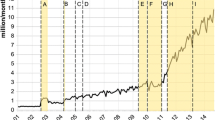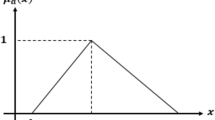Abstract
Like any other transit mode, bus rapid transit (BRT) has a number of service quality and performance attributes that can affect rider satisfaction. However, there is little understanding about BRT rider satisfaction. This study investigates the relationship between riders’ overall satisfaction and underlying driving factors of the BRT service in New York City (NYC), known as select bus service (SBS). Two conceptual structures are developed for three groups of SBS riders based on theoretical review and pilot survey. Hypotheses about relationships between latent variables and observed variables are developed. Survey data obtained from interviewing riders on buses and at bus stops are used to test the hypotheses by applying structural equation modeling (SEM). For each group of riders, one model was built. Acceptable fits were obtained for all three models. In addition, some of the proposed causal relationships were supported in these models. Accepted hypotheses suggest that service quality was the most important factor influencing overall satisfaction for all three kinds of riders, namely, frequency, on-time performance, and speed. The other significant attributes are bus-only lanes, buses with three doors, bus comfort and cleanliness, proximity of bus stops, real-time information, limited stops, and ticket system attributes. Their effects vary among riders on routes with different locations and between rider groups with and without awareness of travel information. The implications of the findings for future planning and system improvement are discussed. In this study, SEM is found to be an appropriate methodology for measuring rider satisfaction levels. The findings are useful for the agencies in NYC and other cities in a similar situation to justify and plan transit service with limited resources.






Similar content being viewed by others
References
Al-Refaie A (2015) Effects of human resource management on hotel performance using structural equation modeling. Comput Hum Behav 43:293–303
Andreassen TW (1995) (Dis) satisfaction with public services: the case of public transportation. J Serv Mark 9(5):30–41
Ben-Elia E, Pace RD, Bifulco GN, Shiftan Y (2013) The impact of travel information’s accuracy on route-choice. Transp Res Part C 26:146–159
Bollen KA (1989) Structural equations with latent variables. Wiley, New York
Boomsma A (1982) Robustness of LISREL against small sample sizes in factor analysis models. In: Jpreskog KG, Wold H (eds) Systems under indirection observation: causality structure, prediction (Part 1). North Holland, Amsterdam, pp 149–173
Brakewood C, Barbeau S, Watkins K (2014) An experiment evaluating the impacts of real-time transit information on bus passengers in Tampa, Florida. Transp Res Part A 69:409–422
Brakewood C, Macfarlan GS, Watkins K (2015) The impact of real-time information on bus ridership in New York City. Transp Res Part C 53:59–75
Brown MW, Cudech R (1993) Alternative ways of assessing model fit. In: Bollen KA, Long JS (eds) testing structural equation models. Sage Publications, Newbury Park, pp 136–162
Comrey AL, Lee HB (1992) A first course in factor analysis, 2nd edn. Erlbaum, Hillsdale
Currie G, Delbosc A (2011) Understanding bus rapid transit route ridership drivers: an empirical study of Australian BRT systems. Transp Policy 18:755–764
Currie G, Wallis I (2008) Effective ways to grow urban bus market—a synthesis of evidence. J Transp Geogr 16:419–429
de Oña J, de Oña R, Eboli L, Mazzulla G (2013) Perceived service quality in bus transit service: a structural equation approach. Transp Policy 29:219–226. doi:10.1016/j.tranpol.2013.07.001
Del Castillo JM, Benitez FG (2013) Determining a public transport satisfaction index from user surveys. Transp A Transp Sci 9(8):713–741
dell’Olio L, Ibeas A, Cecin P (2011) The quality of service desired by public transport users. Transp Policy 18(1):217–227
Eboli L, Mazzulla G (2007) Service quality attributes affecting customer satisfaction for bus transit. J Public Transp 10(3):21–34
Eboli L, Mazzulla G (2011) A methodology for evaluating transit service quality based on subjective and objective measures from the passenger’s point of view. Transp Policy 18(1):172–181. doi:10.1016/j.tranpol.2010.07.007
Eboli L, Mazzulla G (2012) Structural Equation modeling for analyzing passengers’ perceptions about Railway services. Soc Behav Sci 54:96–106
Foote PJ (2004) Making buses better in Chicago: strategic implementation of customer-derived performance measures from 1995–2001. Transp Res Record J Transp Res Board 1884:18–26
Friman M, Edvardsson B, Gärling T (2001) Frequency of negative critical incidents and satisfaction with public transport service, I. J Retail Consum Serv 8:95–104
Golob TF (2003) Structural equation modeling for travel behavior research. Transp Res Part B 37:1–25
Hensher DA, Golob TF (2008) Bus rapid transit systems: a comparative assessment. Transportation 35:501–518
Hou D, Al-Tabbaa A, Chen H, Mamic I (2014) Factor analysis and structural equation modeling of sustainable behavior in contaminated land remediation. J Clean Prod 84:439–449
Hu L, Bentler PM (1999) Cutoff criteria for fit indexes in covariance structure analysis: conventional criteria versus new alternatives. Struct Equ Model 6:1–55
Iseki H, Taylor BD (2010) Style versus service? An analysis of user perceptions of transit stops and stations. J Public Transp 13(3):39–63
Jiang YP, Zegras C, Mehndiratta S (2012) Walk the line: station context, corridor type and bus rapid transit walk access in Jinan, China. J Transp Geogr 20:1–14
Johnson RA, Wichern DW (2007) Applied multivariate statistical analysis, Six edn. Pearson Pertice Hall, Upper Saddle River
Joreskog KG (1973) Analysis of covariance structures. In: Krishnaiah PR (ed) Multivariate analysis, III edn. Academic Press, New York, pp 263–285
Kain JF, Liu Z (1999) Secrets of success: assessing the large increases in transit ridership achieved by Houston and San Diego transit providers. Transp Res Part A 33:601–624
Karlaftis MG, Golias J, Papadimitriou E (2001) Transit quality as an integrated traffic management strategy: measuring perceived service. J Public Transp 4(1):27–44
Kattan L, de Barros AG, Saeemi H (2013) Travel behavior changes and responses to advanced traveler information in prolonged and large-scale network disruptions: a case study of the west LRT line construction in the city of Calgary. Transp Res Part F 21:90–102
McDonnell S, Zellner M (2011) Exploring the effectiveness of bus rapid transit a prototype agent-based model of commuting behavior. Transp Policy 18:825–835
Metropolitan Transportation Authority (2011) New York city transit market research. M15 Select Bus service (SBS) Study, NY
Mouwen A, Rietveld P (2013) Does competitive tendering improve customer satisfaction with public transport? A case study for the Netherlands. Transp Res Part A Policy Pract 51:29–45. doi:10.1016/j.tra.2013.03.002
New York City Department of Transportation and Metropolitan Transportation Authority New York City Transit (2016) A full report of select bus service. http://www.nyc.gov/html/brt/downloads/pdf/brt-routes-fullreport.pdf. Accessed 25 July 2016
New York City Department of Transportation and MTA New York City Transit (2009) Introduction to bus rapid transit phase II. Executive Summary, NY
New York City Planning. Zoning and land use. http://maps.nyc.gov/doitt/nycitymap/template?applicationName=ZOLA (Accessed 03 May 2016)
Ngatia GJ, Toshiyuki O, Fumihiko N (2010) The structure of users’ satisfaction on urban public transport service in developing country: the case of Nairobi. J Eastern Asia society Transp Stud 8:1288–1300
Nunnally JC, Bernstein IH (1994) Psychometric theory, 3rd edn. McGraw-Hill Inc, New York
Pandit D, Das S (2013) A framework for determining commuter preference along a proposed bus rapid transit corridor. Soc Behav Sci 104:894–903
Qureshi SM, Kang CW (2015) Analysing the organizational factors of project complexity using structural equation modelling. Int J Project Manage 33:165–176
Redman L, Friman M, Gärling T, Harig T (2013) Quality attributes of public transport that attract car users: a research review. Transp Policy 25:119–127
Shaaban K, Khalil RF (2013) Investigating the customer satisfaction of bus service in Qatar. Soc Behav Sci 104:865–874
Soriguera F (2014) On the value of highway travel time information systems. Transp Res Part A 70:294–310
Stuart KR, Mednick M, Bockman J (2000) Structural equation model of customer satisfaction for the New York City Subway System. Transp Res Rec 1735:133–137
Tang L, Thakuriah P (2012) Ridership effects of real-time information system: a case study in the city of Chicago. Transp Res Part C 22:146–161
Taylor BD, Miller D, Iseki H, Fink C (2009) Nature and/or nurture? Analyzing the determinants of transit ridership across US urbanized areas. Transp Res Part A 43:60–77
Transportation Research Board (2013) Transit capacity and quality of service manual, 3rd edn
Tyrinopoulos Y, Antoniou C (2008) Public transit user satisfaction: variability and policy implications. Transp Policy 15:260–272
Wan D (2015) Riders’ perceptions of the select bus service in New York City, final report of 911 memorial project submitted to New York City Department of Transportation
Wang B, Shao C, Li J, Weng J, Ji X (2015) Holiday travel behavior analysis and empirical study under integrated multimodal travel information service. Transp Policy 39:21–36
Wiley DE (1973) The identification problem for structural equation models with unmeasured variables. In: Goldberger AS, Ducan OD (eds) Structural equation models in the social science. Seminar Press, New York, pp 69–83
Wolf EJ, Harrington KM, Clark SL, Miller MW (2013) Sample size requirements for structural equation models: an evaluation of power, bias, and solution propriety. Educ Psychol Measur 73(6):913–934
Zheng Z, Lee J, Saifuzzaman M, Sun J (2015) Exploring association between perceived importance of travel/traffic information and travel behavior in natural disasters: a case study of the 2011 Brisbane floods. Transp Res Part C 51:243–259
Acknowledgments
This study was supported by the fellowship provided by September 11th Memorial Program. This program was established by the New York Metropolitan Transportation Council (NYMTC) to cherish the memory of its three lost employees during the attack on the World Trade Center. The University Transportation Research Center Region II (UTRC) is in responsibility of administration of this program. The authors thank James Rubin for technical supporting. And valuable comments from Dr. Ellen Thorson, Robert Thompson, and Jim Sears are appreciated.
Author information
Authors and Affiliations
Corresponding author
Rights and permissions
About this article
Cite this article
Wan, D., Kamga, C., Hao, W. et al. Customer satisfaction with bus rapid transit: a study of New York City select bus service applying structural equation modeling. Public Transp 8, 497–520 (2016). https://doi.org/10.1007/s12469-016-0135-x
Accepted:
Published:
Issue Date:
DOI: https://doi.org/10.1007/s12469-016-0135-x




